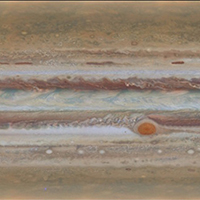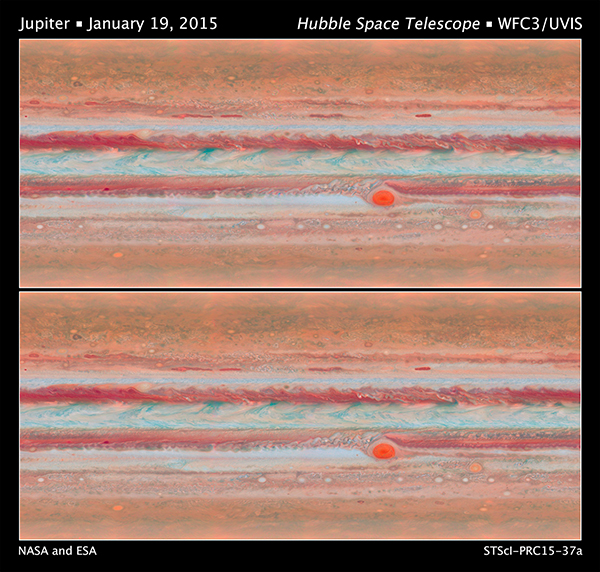Exploring Jupiter’s Mysteries in Ultra HD!
posted Wednesday, October 28, 2015 at 7:45 AM EDT

Using the Hubble Space Telescope, the team at NASA's Goddard Space Flight Center has been able to capture new, ultra high-definition images of Jupiter. The Goddard Space Flight Center studies our solar system and beyond, and has been analyzing Jupiter and other outer planets in our solar system in greater detail using the Hubble Space Telescope.
With high-resolution images of Jupiter to be taken annually, the scientists and researchers at the Goddard Space Flight Center hope to learn more about how Jupiter's atmosphere behaves and how the planet changes over time. Amy Simon, a planetary scientist at Goddard said of the program to study the solar system's outer planets, "Every time we look at Jupiter, we get tantalizing hints that something really exciting is going on. This time is no exception." The two global maps produced using Hubble's Wide Field Camera 3 will help scientists to be able to determine the speeds of Jupiter's winds.

The new images confirmed to scientists that Jupiter's famous Great Red Spot has continued to shrink. Excitingly, the researchers also captured an image of a wave on Jupiter's North Equatorial Belt. This wave has been seen only once before by the Voyager 2 probe, way back in 1979, and scientists had openly speculated that it might have been a fluke event. Now we know it's not a one-off, just very rare.

Through the new Outer Planet Atmospheres Legacy program, these images of Jupiter and upcoming new images of Neptune and Uranus will also be available for the public to view. Scientists hope that these annual observations and images will provide valuable data about the outer planets in our solar system for many years to come.
For more information on the Hubble Space Telescope and its various imaging capabilities, please visit Hubblesite.org
(Via My Modern Met with additional information from NASA's Press Release)